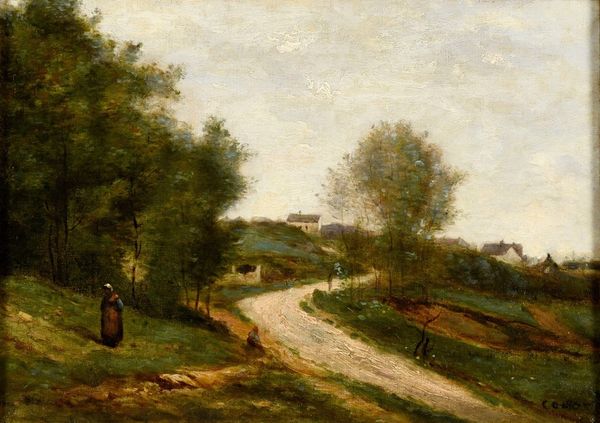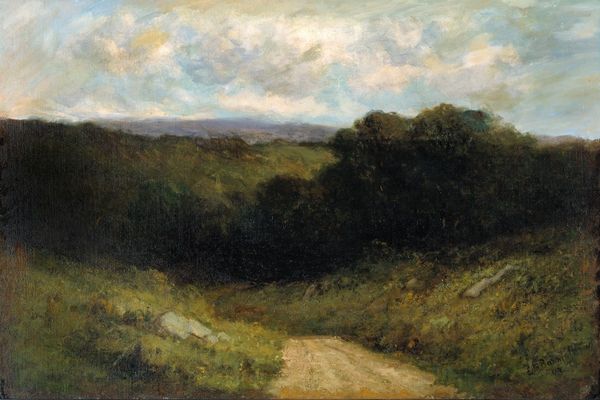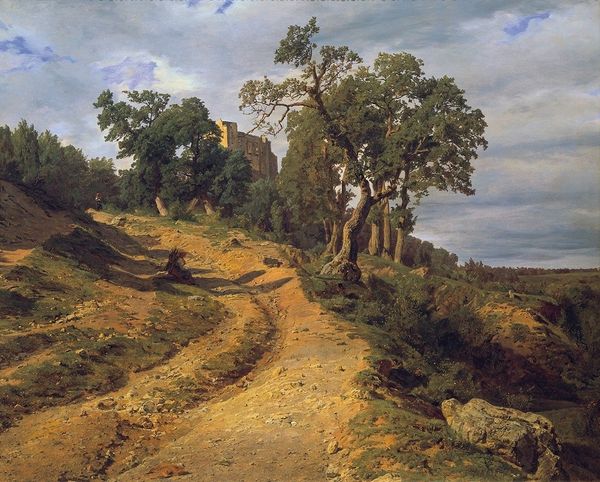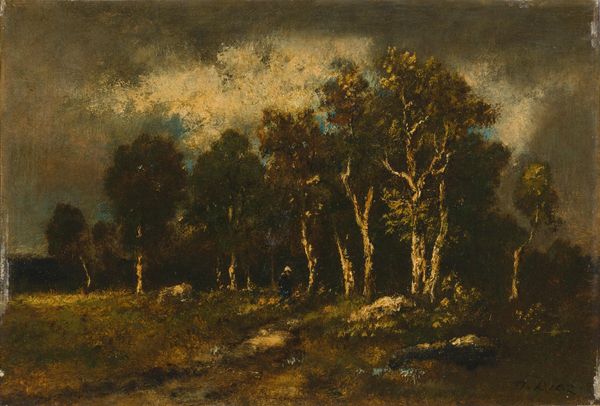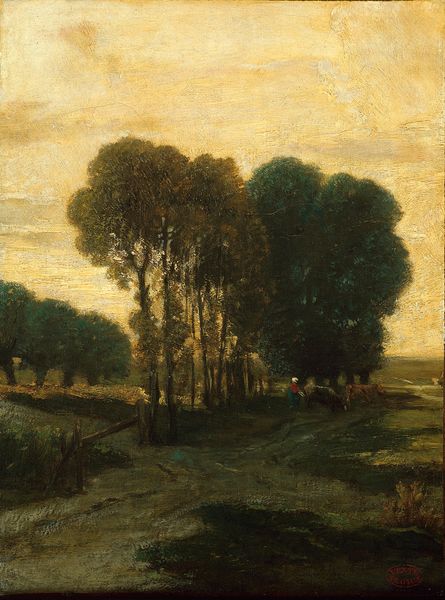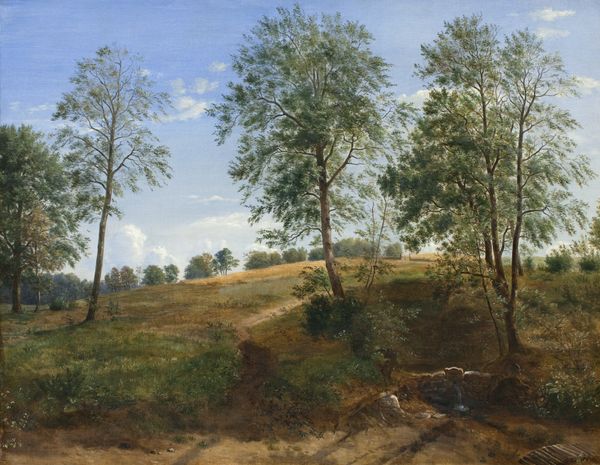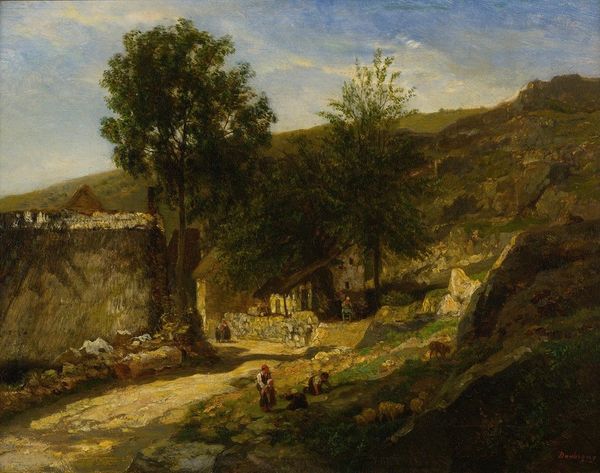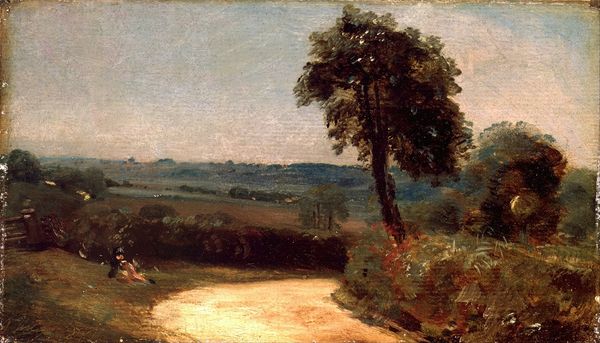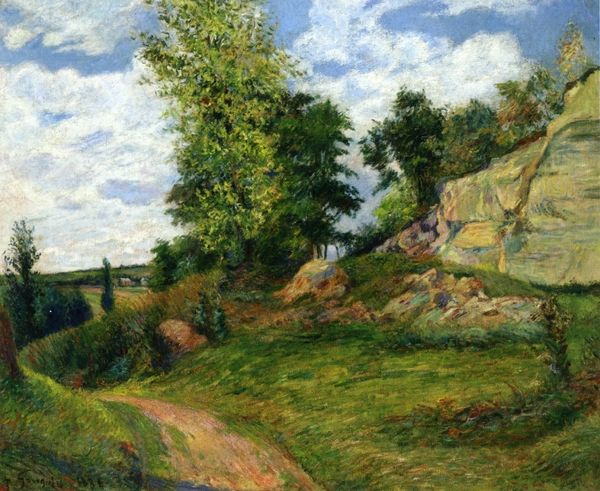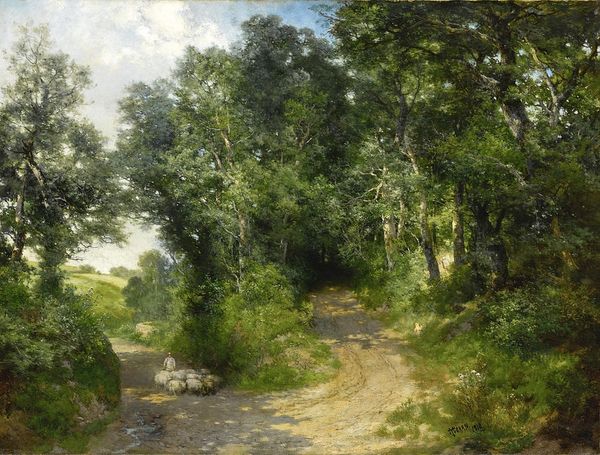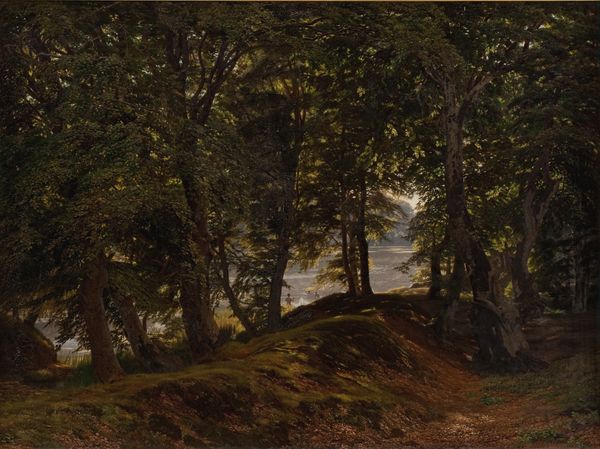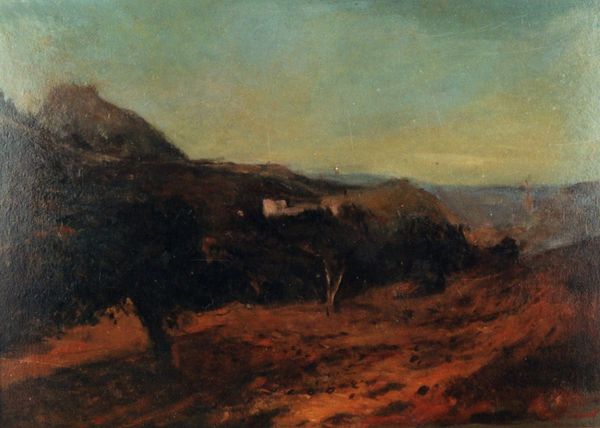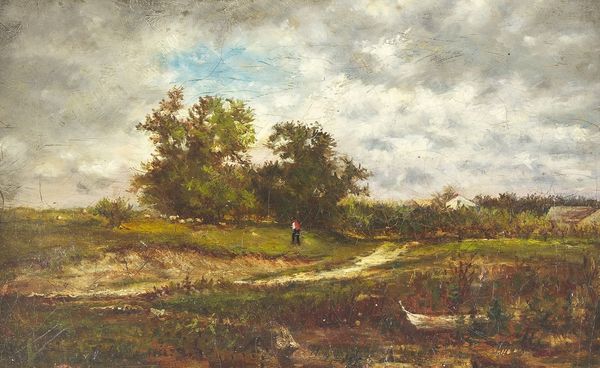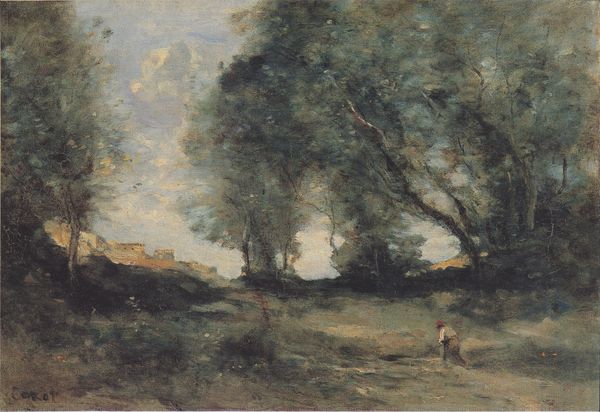
Dimensions: 46.5 x 55 cm
Copyright: Public domain
Editor: This is Gustave Courbet's "Paysage Guyere," painted in 1876. It looks like an oil painting, maybe done outdoors? I find its overall tone quite peaceful, but also a little melancholic. What do you see in this piece? Curator: Beyond its obvious beauty, this landscape speaks to Courbet's radical Realism, a movement inherently political. Consider its timing: painted during his exile after being falsely implicated in the destruction of the Vendôme Column. Doesn't this serene depiction of nature almost read as an act of defiance against the establishment that persecuted him? Editor: That's a powerful reading! So, the very act of painting a landscape was a statement? Curator: Precisely! He turned to the natural world as a space of authenticity and freedom, removed from the ideological battlegrounds of Paris. How might this retreat reflect contemporary conversations around artists needing safe spaces and resistance? Does it shift how you view it? Editor: Absolutely. I was focused on the aesthetic, but situating it within Courbet's personal and political struggles reveals a deeper layer of meaning. It is like nature becoming a sanctuary of rebellion. Curator: Indeed. And don't forget his commitment to painting *en plein air*! Capturing the light and textures firsthand becomes its own sort of truth-telling, wouldn't you agree? Editor: I see that, now. Thanks to Courbet’s story, the image now feels very layered. Curator: I agree; that kind of enriched view is how historical and social contexts change our view and highlight intersectional narratives.
Comments
No comments
Be the first to comment and join the conversation on the ultimate creative platform.
